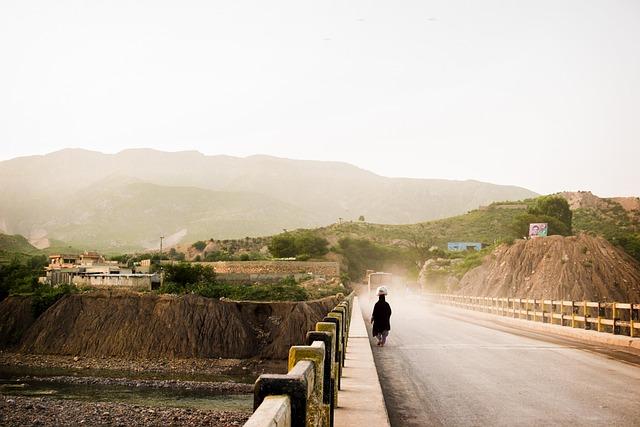In the heart of South Asia, where the rugged mountains meet the sprawling plains, lies Pakistan—a nation vibrant in culture and resilience yet shadowed by the persistent specter of terrorism. Since its inception, this diverse tapestry of languages, customs, and traditions has been woven with threads of both hope and hardship. The struggle against terrorism in Pakistan is not merely a battle against visible enemies; it is a complex narrative entwined with socio-political dynamics, historical grievances, and the quest for peace. As the country grapples with the ramifications of extremist ideologies and violence, understanding this intricate web of challenges is essential for illuminating the path forward. This article delves into the multifaceted struggle against terrorism in Pakistan, exploring the historical origins, the socio-economic implications, and the enduring spirit of its people as they endeavor to forge a safer, more unified future.
Understanding the Historical Context of Terrorism in Pakistan
The emergence of terrorism in Pakistan is deeply intertwined with the nation’s complex history, marked by political upheaval, ethnic strife, and foreign interventions. After gaining independence in 1947, Pakistan was thrust into a series of conflicts, both internal and external, which laid the groundwork for extremist ideologies to take root. The Soviet invasion of Afghanistan in 1979 turned the region into a battleground, leading to the proliferation of jihadist groups that received support from various international actors. These groups, initially formed to resist foreign occupation, often morphed into factions with their agendas, contributing to a volatile landscape. Over the years, the dichotomy between state and non-state actors blurred, creating an environment where terrorism could thrive as different factions sought to exert influence over politics and society.
In addition to geopolitical factors, several socio-economic issues have further exacerbated the problem of terrorism in Pakistan. Poverty, illiteracy, and lack of opportunity have contributed to the radicalization of youth, making them susceptible to extremist narratives. The swelling population of displaced individuals from tribal areas due to military operations has also fueled unrest, breeding resentment and a sense of marginalization. The government’s inability to effectively address these root causes has perpetuated the cycle of violence. In recent years, there have been attempts to combat these issues through various initiatives, including community programs and educational reforms, but the challenges remain daunting. Highlighting the importance of understanding the multifaceted roots of terrorism enables a more nuanced approach to crafting viable solutions.
| Key Factors Contributing to Terrorism | Description |
|---|---|
| Geopolitical Tensions | Influence of foreign interventions and conflicts. |
| Socio-economic Challenges | High poverty and low literacy rates pushing youth towards extremism. |
| Ethnic Conflicts | Deep-rooted societal divisions leading to group-based violence. |
| Militancy and Extremism | Rise of militant groups with conflicting agendas. |

The Socioeconomic Factors Fueling Extremism
In Pakistan, the complex interplay of various socioeconomic factors has served as a fertile ground for the rise of extremist ideologies. Poverty and unemployment are critical issues that often leave young people disillusioned and searching for purpose. When communities are devoid of economic opportunities, frustration can lead to a susceptibility to radicalization. Furthermore, lack of education exacerbates the problem, with many individuals being deprived of critical thinking skills and the ability to question extremist narratives. In such an environment, extremist groups often exploit these vulnerabilities, offering a sense of belonging and purpose to those who feel marginalized.
Additionally, the impact of political instability cannot be overlooked. Frequent changes in government and policy lead to a feeling of uncertainty and can breed cynicism among the populace. In areas where governance is weak, local leaders may turn to extremist groups for support, further embedding these organizations into the social fabric. The following table illustrates some key socioeconomic indicators and their correlation with extremism:
| Indicator | Impact on Extremism |
|---|---|
| Poverty Rate | Higher risk of radicalization |
| Unemployment Rate | Increased disillusionment |
| Education Levels | Lower critical thinking skills |
| Political Stability | Fueling of extremist narratives |

Strengthening Civil Society: Building Resilience Against Radicalization
In the face of growing extremism, bolstering the capacity of civil society is essential for fostering resilience against the forces of radicalization. This involves not only fostering awareness about the dangers of radical ideologies but also engaging communities in constructive dialogues. By empowering local organizations and encouraging grassroots initiatives, communities can create safe spaces for discussion, enabling individuals to voice their concerns and grievances without resorting to violence. Key strategies include:
- Promoting Educational Programs: Integrating curricula that emphasize critical thinking and tolerance.
- Encouraging Community Engagement: Creating platforms for youth to participate in civic projects.
- Supporting Mental Health Services: Addressing the psychological factors that can lead to radicalization.
Moreover, collaboration among government entities, non-governmental organizations, and community leaders plays a vital role in this endeavor. A multi-faceted approach can help dismantle the criminal networks that often exploit social vulnerabilities. A comprehensive strategy could involve:
| Collaborative Strategies | Expected Outcomes |
|---|---|
| Capacity Building Workshops | Enhanced skills for community leaders in conflict resolution. |
| Public Awareness Campaigns | Increased awareness of radicalization signs among citizens. |
| Interfaith Dialogues | Stronger communal ties and diminished sectarian tensions. |

Policy Recommendations for a Comprehensive Counterterrorism Strategy
To effectively confront the multifaceted challenges of terrorism, Pakistan must adopt a holistic approach that integrates various dimensions of national security. This strategy should emphasize collaboration with local communities to counter radicalization efforts and foster resilience. Establishing community engagement programs that promote education and awareness can help dismantle the narratives exploited by extremist groups. Moreover, strengthening intelligence-sharing frameworks among law enforcement agencies is essential for preemptively neutralizing threats. By encouraging public-private partnerships, the state can amplify efforts against funding flows that underpin terrorism.
Investing in socioeconomic development is crucial; utilizing funds for improving healthcare, education, and employment opportunities will not only alleviate poverty but also diminish the allure of extremist ideologies. Enhancing regional cooperation with neighboring countries can improve the management of cross-border terrorism, as these nations often share similar threats. A diplomatic approach, paired with focused military operations against identified militant groups, will add layers of effectiveness to counterterrorism strategies. The proactive engagement of civil society organizations is also vital, as they can act as a bridge between the government and the citizenry, promoting a narrative of peace and tolerance.
Future Outlook
As we draw the curtain on our exploration of Pakistan’s intricate battle against terrorism, it becomes evident that the threads of this multifaceted struggle are woven deeply into the fabric of the nation’s history, culture, and identity. The journey is neither linear nor simple; it is marked by pain, resilience, and an unwavering hope for peace. While the shadows of violence have loomed large, the country continues to grapple with its realities, striving to forge a path toward stability and resilience.
In this narrative, it is crucial to recognize the voices of those who have been affected, the families shattered by loss, and the communities uniting in the face of adversity. Their stories serve as a poignant reminder that behind every statistic lies the human experience—a tapestry that reflects the strength of the Pakistani spirit.
As we move forward, understanding the complexities of terrorism in Pakistan invites a deeper dialogue. It compels us to examine not just the acts of violence but also the socio-political dynamics that give rise to such extremism. In unraveling these threads, we gain insight into a nation’s journey toward healing and renewal.
The road ahead may still be fraught with challenges, but through awareness, empathy, and collective effort, a narrative of hope can emerge. As Pakistan continues its struggle, we stand as witnesses to its evolution, encouraging a future where peace and understanding prevail over discord and division.



